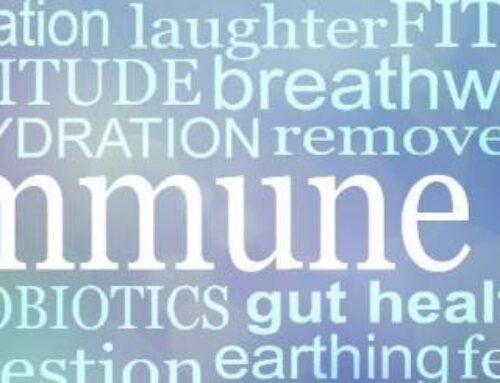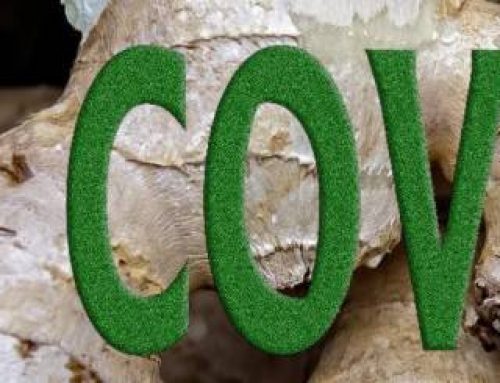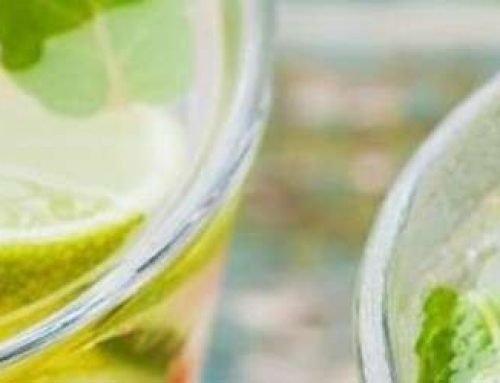Keto & The Blood Type Diet
by: Carolyn Berghuis, MS, ND, CTN
Since it’s Fall I had the urge to I treat myself to a little clothes shopping yesterday – maybe you can relate. However, admittedly, I was a little concerned about what size to select from the rack. The little voice inside spoke rather loudly – “Hopefully I won’t need a larger size!” Just to be safe, I took two sizes of everything into the dressing room. I took both size 6 and 8 for the jeans I wanted to try on and size small and medium for the tops. Thankfully, I was pleasantly surprised to discover that my size hasn’t increased over the last couple of months. The smaller sizes were perfect!
Let me explain. I have been a couch potato, rather I have been a bed potato, recovering from a very bad ankle break these last few months, a trimalleolar fracture. I broke all three bones in my left ankle, had surgery complete with some fancy hardware, and I was non-weight bearing for weeks. I thought my new “bed potato” status would surely tip the scales in the wrong direction!
How Did This Happen
How did I do this you may ask? Well, one moment I was enjoying an evening walk with my husband and our two little dogs, and the next moment I was on the sidewalk writhing in PAIN! While enjoying a lovely conversation with my husband and our neighbors across the street I wasn’t watching my steps. My left foot came down wrongly on the curb and down I went. (I know, I need a better story – it was a tall curb though.)
Except for an occasional outing with knee scooter in tow and some office work, I was sentenced to plenty of bed rest. Fortunately I have a desk job. In light of my lack of activity I was afraid I would gain back the weight I lost last Spring (2019) when I introduced various types of fasting into my lifestyle. Imagine my delight when I learned that I did NOT gain weight! Whoop, whoop! I wanted to do the happy dance in the dressing room; but alas, my ankle is not quite up to that, yet…
How I Avoided Weight Gain
How did I not gain weight with all that bed rest? Well, I am convinced that my diet, coupled with the metabolic “reset” I did last Spring (2019) with various types of fasting, and my daily supplements are the reason. My “secret sauce” is the following:
- A combined Keto & Blood Type Diet
- Intermittent Fasting
- High quality nutritional remedies.
Keto-Blood Type Diet
OK, so I will share with you that I am not one of those naturally skinny girls. It seems I gain weight just by looking at donuts in the bakery section at the grocery store! My pancreas starts releasing insulin (a fat storage hormone) when they catch my eye. Once this happens my body desperately clings on to every fat cell it has. Well, maybe my pancreas isn’t that sensitive to those tasty little treats under the glass (I need to stop looking); however, I do gain weight easily and this is very FRUSTRATING! History has taught me that I need to exercise on a very regular basis to avoid gaining weight.
However, things changed. After all, I haven’t been to my Pure Barre (a ballet inspired work-out) classes for over two months, I haven’t been able to go on walks with my doggies, and on top of not exercising, I have been a “bed potato”! I am convinced that my lack of exercise and bed rest is NOT the reason I didn’t gain weight. It must be my diet, Intermittent Fasting, and consistency with my remedies.
My Diet
Last Spring, in addition to incorporating various types of fasting into my lifestyle, I made a big change in my diet. I introduced the fat heavy Keto Diet into the Blood Type Diet I have been following for decades. As a result of this change my metabolism and blood sugar handling mechanism improved dramatically, I dare say it was “healed”.
Remaining mindful to incorporate “highly beneficial” and “neutral” blood type A foods into my diet (I am blood type A+), I looked for ways to increase Keto foods in my diet as well. Since Keto is heavy in dietary fats I incorporated avocados, nuts, seeds, butter, ghee, and olive oil. I stayed away from the Blood Type A “avoid”, yet Keto approved, fats such as those fats found in red meat, pork, and many cheeses. For my protein I looked for fattier selections or, if I was eating a leaner protein, I was mindful to add additional fat to my dish. I also omitted fruit and simple carbs. I even cut out berries and low glycemic fruits – I was serious about my attempt to loose weight. Dark leafy greens and vegetables were still in my diet. Here are the major changes I made:

Morning Coffee (AKA Breakfast)
I include plenty of coconut milk creamer, stevia, and a dash of nutmeg and cinnamon. Sometimes I add a little butter or ghee. I know coconut milk is an avoid for my blood type; however, from my research this is mainly because coconut fat is a saturated fat (albeit a healthy saturated fat). Saturated fats, if taken in excess, especially when ingested in the forms of trans fats and hydrogenated fats, can trigger a long list of health issues including inflammation, allergies, cardio-vascular disease, immune system disruption, and on the list goes. It’s not a pretty list.
However, we do need some saturated fats in our diet for optimal health – just not the trans and hydrogenated man-made fats. Actually, we need a mixture of saturated and unsaturated fats. Fats are a key component to our cell membranes and all types are needed. On the saturated fat note, they key is to avoid trans and hydrogenated fats while taking in a variety of healthy saturated fats. Coconut oil, palm oil, butter, and ghee are all examples of healthy saturated fats.
Fun Fact: Trans and hydrogenated fats have a 57 day half life. This means if you eat a food containing this type of fat today, in 57 days half of this nasty fat will still be stuck in your body causing harm. In another 57 days half of that half will be gone, and so on. Basically, it takes your body a long time to move them out. What foods contain trans and hydrogenated fats you may ask? These man-made fats are used to fry foods and they are also found in baked goods where they make the product light, flaky and fluffy. Look for labels that have the words “hydrogenated vegetable oil” – it could be either fully or partially hydrogenated.

Smoothie: Instead of having my smoothie shortly after I wake up like I did before last Spring, I now have it sometime between 11 AM and 1 PM – depending on when hunger sets in. I do make sure to have it before my first client at 1 PM – my brain likes the fuel! Waiting to have my smoothie each day is part of my Intermittent Fasting practice.
Here is my Keto – Blood Type A smoothie recipe:
-
- 1 whole avocado
- Handful of organic fresh kale or spinach
- 1 TBLS MCT oil
- 1 cup Coconut milk beverage (mine is vanilla and it doesn’t have sugar or other sweeteners.)
- 4 scoops SP Complete Chocolate.
This is a very low carbohydrate smoothie loaded with healthy fats and other key nutrients. I feel satiated for hours with it.
Lunch: Since I have incorporated various types of fasting in my life, including Intermittent Fasting, my smoothie is my lunch. If I feel I need a little snack in the afternoon I will grab 1 or 2 TBLS of peanut butter or an organic hard-boiled egg (complete with Celtic Sea Salt) from a free range chicken. I do splurge on peanut butter and eggs – good products cost more. My organic peanut butter has a palm oil in it instead of hydrogenated vegetable oil, and my eggs have deep yellow yokes.
Dinner: Dinner consists of a protein; fish, turkey, or chicken, and a salad or vegetable. I choose organic whenever possible. When choosing protein I look for fatty meats like chicken thighs. If I am having a turkey burger I make sure I add plenty of avocado mayo and a slice of mozzarella cheese. When I have fish I broil it in plenty of red palm oil and I drizzle olive oil or butter over it. I use plenty of seasonings to taste.
Smoothie and Other Blood Types
Changing Your Fats
For the other blood types I recommend omitting the avocado from your smoothie. Instead, include a fat that suites your blood type. Here are some options of blood type compatible fats you can add to your smoothie. I recommend at least a TBLS of each. It’s a good idea to mix things up and include a variety of oils in your diet. This is not a conclusive list by the way. If you want to learn more about your blood type foods I recommend this book: Eat Fight For Your Type.
Blood Type O Fats: Flax seeds, almond oil, chia seed oil, macadamia oil, sesame seed oil, walnut oil, almond butter, and/or pecan butter.
Blood Type B Fats: Almond oil, chia seed oil, flax seed oil, hazelnut oil, macadamia oil, sunflower oil, walnut oil, almond butter, and/or pecan butter.
Type AB Fats: Walnut oil, almond oil, chia seed oil, flax seed oil, hazelnut oil, peanut butter, almond butter, and/or pecan butter.
Type A Fats: Flax seeds, almond oil, chia seed oil, macadamia oil, peanut butter, almond butter, pecan butter, and/or sunflower butter.
For all blood types I recommend including a high quality Cod Liver Oil and Black Current Seed Oil into your daily supplement regimen; however, not in your smoothie! Olive oil is also good for everyone; however, it doesn’t taste good in your smoothie either.
Changing Your Protein Powder
Additionally, you may need to modify your protein powder based on your blood type. If you have a protein powder you love this is great! If this is the case, I recommend you use a high quality product with about 15 grams of protein. Make sure you read your label to ensure it doesn’t contain an isolated protein.
I am personally a fan of Standard Process and the remedies they produce; however, there are many other good protein products on the market. You will need to do your research. If you want to use a Standard Process product here are my suggestions:
Blood Type A, B, and AB individuals: SP Complete Chocolate, SP Complete Vanilla and SP Complete
Blood Type O individuals: Veg E Complete Chocolate, Veg E Complete Vanilla, or SP Complete Daily Free.
My Daily Food Pattern
When I choose a salad I add a high fat, organic (or home-made) salad dressing, plenty of nuts and seeds, an organic hard-boiled egg, and feta cheese. For the greens I use dark leafy greens. If I have a vegetable instead of a salad, I make sure to add plenty of butter, olive oil, and Ghee along with Celtic Sea Salt. Why not a vegetable AND a salad? Well, I’m just not that hungry these days. My hunger may change when I get back to working out.
Am I perfect with my diet today? Well, no. I do sometimes have a glass of wine on the weekend and once in a while I have a slice of bread. However, my physiology has most definitely changed and I rarely experience hunger or food cravings. (I used to rummage the pantry looking for something to curb my sweet tooth). Now I no longer crave sweets or bread. On top of that, I can go for extended periods of time without hunger and I no longer experience “shakiness” – something that resulted from low blood sugar. Life is good.
Keto 101
If you would like to learn more about the Keto Diet I invite you to view a video I found by Dr. Eric Berg. He does an excellent job introducing the new-comer to Keto. However, I still recommend you pair the Keto Diet with your blood type. As mentioned above, since I am blood type A I do not eat bacon or red meat – both are avoid foods for blood type A individuals. And after all – for me anyway, the proof is in the dressing room! By the way, I am still working on losing a bit more weight. My goal is to be back in a jean size 4. I’ll keep you posted!
Dr. Berg’s Healthy Keto Basics: What To Eat.
If you would like guidance on your journey into health and wellness you are invited to schedule a session with me via my On-Line Scheduler – here is the link: On-Line Scheduler. In the mean-time have a marvelously healthy and happy day!










Thanks for your take on combining keto and blood type eating. I am having great results on keto but plateaued and was guided by an experienced dietician to research blood types and food choices. I am A+ and prior to keto ate limited protein and too many carbs. Switching to keto gave me results. Blood sugar stabilised, sleep improved and I lost weight and had control of my appetite with intermittent fasting. I will now add in the blood type recommendations to continue my journey back to full health.
Hi Brenda,
Thank you for sharing your positive experience with a keto/blood type diet! I too am blood type A and I have found this hybrid diet to be the best for both my overall health and sustained weight loss.